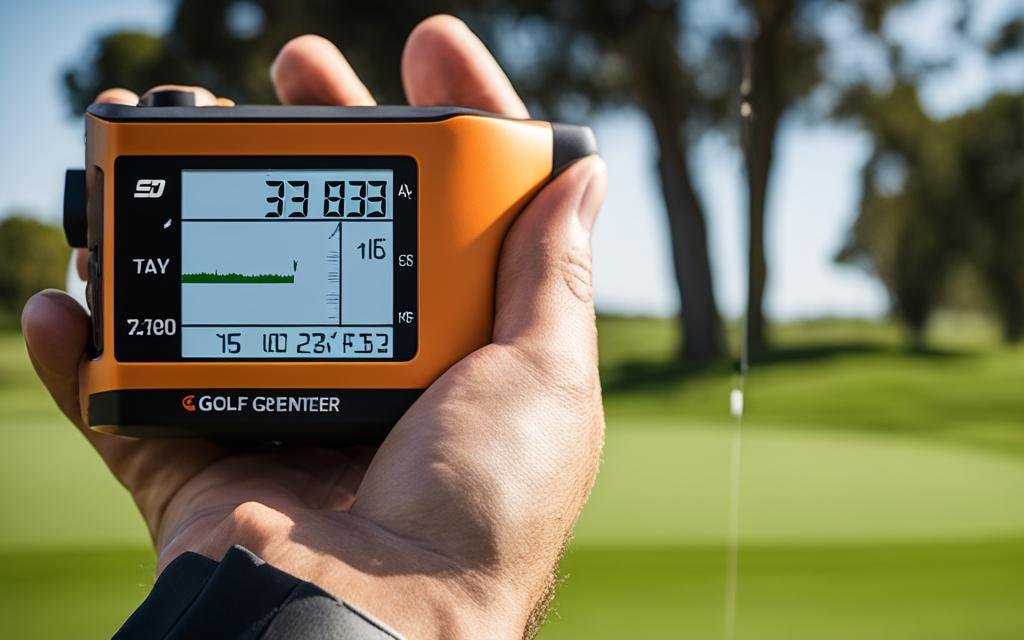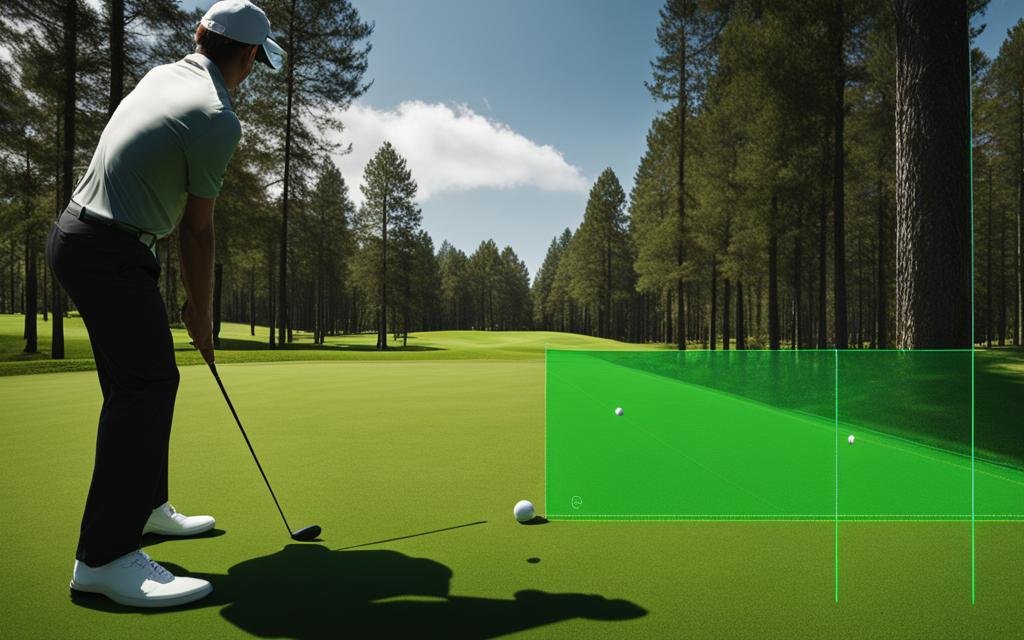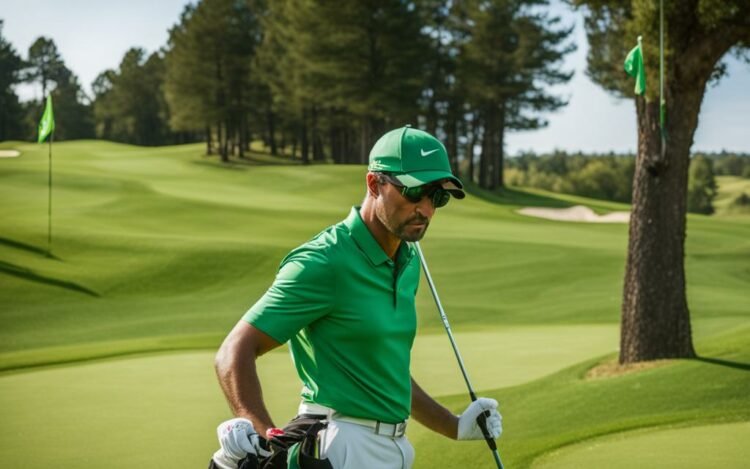Are you in the market for a laser golf range finder? Before you make a purchase, there are several important factors to consider. By taking the time to evaluate these factors, you can ensure that you choose the right range finder that meets your needs and improves your golf game.
When buying a golf range finder, it’s crucial to look beyond the brand and price. Consider the features and functionalities that will truly enhance your experience on the course. Factors such as magnification, battery life, slope functionality, price, size, scan mode, durability, and the choice between laser and GPS rangefinders all play a significant role in the effectiveness and usability of your range finder.
By understanding the key considerations before your purchase, you can make an informed decision and find the perfect laser golf range finder that suits your individual needs and budget. So, let’s dive deeper into these factors and find out what to consider when buying a golf range finder.
Key Takeaways:
- Consider the features and functionalities that will enhance your experience on the golf course.
- Factors to consider include magnification, battery life, slope functionality, price, size, scan mode, durability, and the choice between laser and GPS rangefinders.
- Make an informed decision by evaluating these factors and finding a range finder that suits your needs and budget.
- Don’t overlook the importance of accuracy and ease of use when choosing a golf range finder.
- Remember to prioritize the features that will have the most significant impact on your gameplay.
Magnification and Accuracy
When it comes to choosing a golf range finder, magnification is an important factor to consider. Most range finders on the market offer some level of magnification, enabling you to accurately measure yardages even from several hundred yards away. This feature is particularly useful when you find yourself on the tee box, trying to determine the distance to a water hazard before taking your shot. The ability to accurately gauge distance can greatly impact your club selection and overall gameplay.
With a high level of magnification, you’ll be able to clearly see and focus on your target, ensuring that you get the most accurate yardage readings possible. Whether you’re a beginner or an experienced golfer, having a range finder with excellent magnification can significantly improve your confidence and decision-making on the course.
It’s worth noting that the accurate yardage measurements provided by a golf range finder can also help you avoid obstacles such as bunkers and trees, allowing you to strategize your shots more effectively. By knowing the precise distance to various targets, you can make more informed decisions and increase your chances of success during your round.
Battery Life and Rechargeability
When it comes to choosing a golf range finder, battery life is an essential factor to consider. You want a device that can last throughout your entire game without running out of power. Luckily, many golf range finders now come with rechargeable batteries, allowing you to easily charge them between rounds and ensuring you never run out of juice on the course.
Having a long battery life is particularly important if you’re someone who plays golf frequently. You don’t want to constantly worry about your range finder dying in the middle of a round. Look for a model that offers a battery life that can last at least a full season of golf or one that can withstand multiple rounds on a single charge.

Before making a purchase, be sure to check the specific product’s battery specifications. Look for information on how long the battery typically lasts, how long it takes to recharge, and any additional features that may impact battery life. This way, you can make an informed decision and choose a golf range finder that will meet your needs on the course.
Slope Functionality and Tournament Play
When considering a golf range finder, one important feature to evaluate is the slope functionality. This capability takes into account the elevation of the course and provides a more accurate reading of the yardage. It can be particularly useful when playing on hilly or undulating terrain, helping you make more informed club selections.
However, it’s essential to understand that slope functionality is generally not allowed in tournament play, as per the rules set by the United States Golf Association (USGA). This limitation is in place to maintain fair competition and prevent an unfair advantage. Therefore, if you plan on participating in USGA events or any other tournaments, it’s crucial to choose a golf range finder that allows you to disable the slope function.
To comply with tournament regulations, many golf range finders offer a mode that disables the slope functionality, allowing you to use it in casual rounds and practice sessions while adhering to the rules during official events. It’s important to carefully review the product specifications and ensure that the range finder you select has this option available. By doing so, you can enjoy the benefits of slope functionality during casual play while still participating in competitive tournaments.
Pricing and Its Impact on Your Golf Game
When it comes to choosing a laser golf range finder, one of the important factors to consider is the pricing. The price range for golf range finders can vary significantly, from lower-cost options around $150 to high-end models that cost well over $500. It’s crucial to weigh the price against the impact it will have on your game.
For golfers who are just starting out or still working on improving their skills, investing in a lower-cost range finder may be a more practical choice. If you’re still struggling to break 100, the difference between knowing the distance as 145 yards or 148 yards may not significantly impact your club selection or overall gameplay. In this case, a more affordable option can provide the necessary yardage information without breaking the bank.
On the other hand, scratch golfers or those who frequently participate in tournaments may have different considerations. The rules of many tournaments, including those governed by the USGA, do not allow the use of range finders with slope functionality. If you fall into this category and regularly compete in events, it may be wise to opt for a range finder without slope functionality. By doing so, you can ensure that your range finder is tournament-compliant and avoid any potential penalties or disqualifications.
Ultimately, the decision on pricing should align with your specific needs and budget. Assess the impact that a higher-cost range finder will have on your gameplay and determine if it justifies the additional investment. Remember, the goal is to find a range finder that provides accurate yardages and enhances your overall golf experience without putting unnecessary strain on your wallet.
Considerations When Evaluating Pricing Options:
- Assess your skill level and how much the difference in yardage will affect your club selection
- Take into account the rules and regulations of tournaments if you participate in them frequently
- Weigh the benefits of additional features against the increased cost
- Determine your budget and find a range finder that aligns with it
Size and Display
When choosing a golf range finder, the size and display are important factors to consider. The size of the unit itself should be taken into account, especially if you walk a lot during your rounds. Opting for a lightweight and compact range finder will ensure that it doesn’t add unnecessary weight or bulk to your golf bag. This way, you can comfortably carry it with you throughout the course without feeling weighed down.
Additionally, the size of the display is crucial for clear visibility. Make sure the display is large enough and offers clear, easy-to-read numbers. This is especially essential if you have any vision issues. You want to be able to quickly and accurately view the yardage readings without any difficulty or strain.
Consider the following:
- Choose a golf range finder that is lightweight and compact for ease of use.
- Ensure the display is large enough and offers clear visibility.
- If you have vision issues, test the range finder beforehand to ensure you can easily read the numbers on the screen.
By taking into account the size and display features of a golf range finder, you can choose a device that is convenient to carry and provides clear visibility of yardage readings.

Scan Mode and Pin Seeker Technology
When it comes to choosing the right laser golf range finder, two key features to consider are the scan mode and pin seeker technology. These features can greatly enhance your golfing experience by providing quick and accurate yardage measurements.
A range finder with a scan mode allows you to continuously scan the course and locate targets more efficiently. With the continuous scan mode, you can simply sweep the range finder across the course, and it will continuously update the yardage measurements as you move. This feature saves you time and ensures that you have accurate yardages at your fingertips.

Pin seeker technology is another valuable tool that helps you lock onto the pin with precision. This feature is particularly useful when you’re on the green and need accurate yardage measurements for your putt. With pin seeker technology, the range finder identifies the pin and eliminates any background objects, ensuring that you get accurate readings for your target.
By utilizing the scan mode and pin seeker technology, you can enhance your gameplay and make more informed decisions on the golf course. These features not only save you time but also provide you with the confidence to choose the right club and make accurate shots. Whether you’re a beginner or an experienced golfer, having a range finder with scan mode and pin seeker technology can significantly improve your overall performance.
Conclusion
When it comes to choosing the right laser golf range finder, there are several important factors to consider. By considering factors such as magnification, battery life, slope functionality, price, size, scan mode, durability, and the decision between laser and GPS rangefinders, you can make an informed decision that suits your needs and improves your golf game.
One of the key factors to look for is magnification, as it allows for accurate yardage measurements even from a distance. Battery life is another crucial consideration, especially if you want a range finder that lasts an entire golf season. Additionally, be aware of slope functionality, which may increase the cost but cannot be used in tournament play.
Price range is important as well, and it should align with your needs and budget. Consider how often you’ll use the range finder and if the pricing will significantly impact your gameplay. Size and display are also important, with lightweight and compact options being suitable for those who walk a lot during rounds.
Other features like scan mode and pin seeker technology can help you locate targets quickly and acquire accurate yardages. By taking all these factors into account, you can make a well-informed purchase. Use this guide as a reference when selecting your laser golf range finder, and get ready to enhance your golfing experience!

